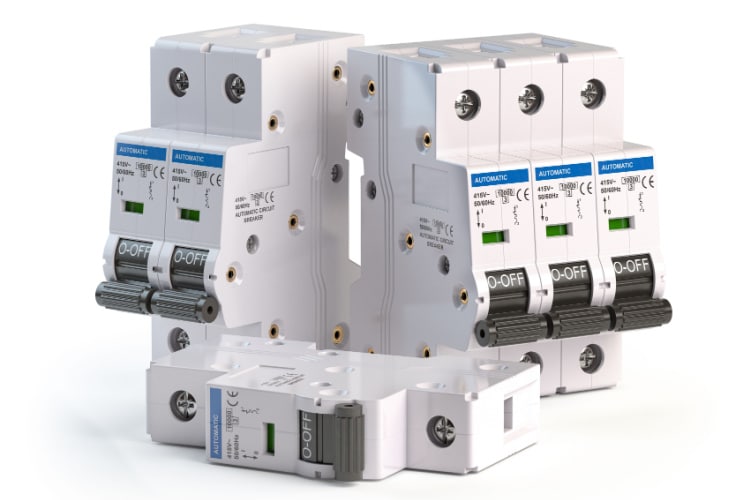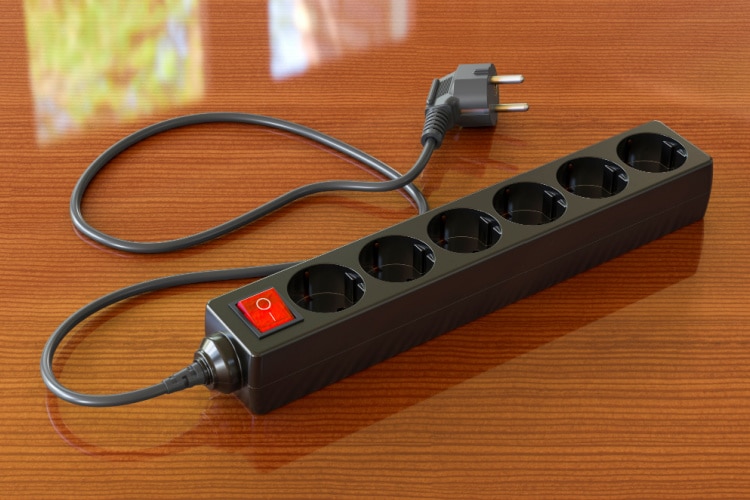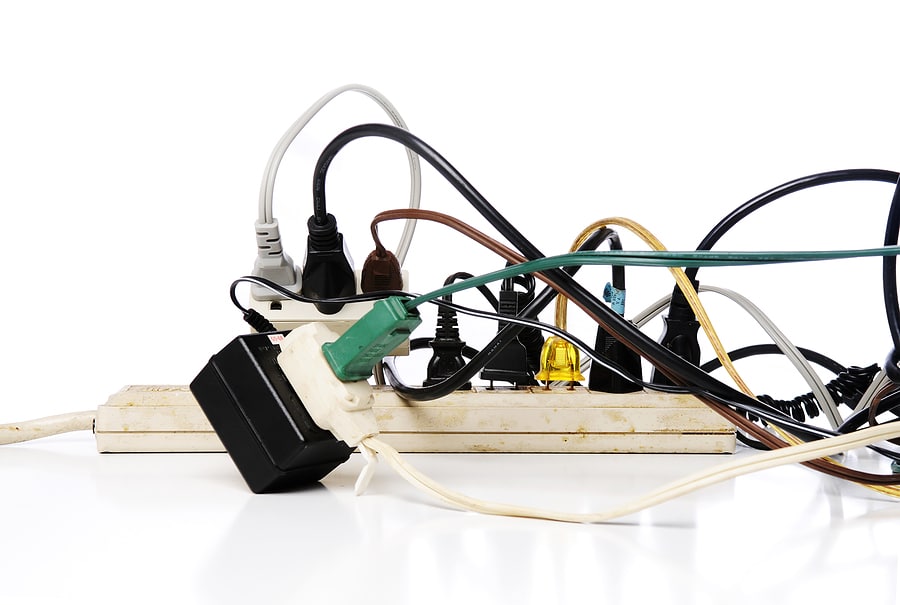Surge protectors and circuit breakers are two of the most prevalent electrical safety devices. We use them frequently, yet, there is a lot of misconception regarding their functionality.
Are they two gadgets that work identically? Or are there differences between them? They’re different, and this article explains in what ways. So, let’s get started.
Difference Between Circuit Breaker and Surge Protector
The main difference between a circuit breaker and a surge protector is that a circuit breaker protects the electrical system from overloading, while a surge protector protects household devices and appliances from a power surge.
First, let’s talk about a circuit breaker. It’s an electrical protection device that controls the power flow in an electrical system. When the current exceeds a particular level, the circuit breaker will shut off the circuit (power).
Electrical overload happens when too many high-powered appliances simultaneously operate on the same circuit. Under such circumstances, the electrical wires are under pressure because high volumes of electricity pass through at a very high speed, increasing the possibility of overheating and potentially a fire.

What about a surge protector? As its name indicates, it shields the plugged electrical equipment from possible surges (sudden spikes in electricity). This gadget only reacts to voltage (electrical output) and doesn’t keep track of the electrical system’s current as a circuit does.
Lightning strikes, electrical overloads, defective wiring, and out-of-date wiring networks can trigger power spikes. Hence, if an incident like this occurs, the surge protector absorbs and minimizes the extra voltage before it damages plugged devices.

To summarize, a circuit breaker shields the wires from melting and potentially starting a fire. In contrast, a surge protector shields plugged equipment from an unexpected power surge that might cause irreparable damage.
The circuit breaker protects the wires by mechanically breaking the circuit, whereas the surge protector shields electronics by absorbing and rerouting the excess voltage from an electrical surge.
Where Are They Installed?
All buildings and households have a main circuit breaker. It’s a mandatory part of every power system.
When it comes to installation, circuit breakers are commonly installed in the house’s basement or garage. Apartment complexes typically have them in a central location, such as a hallway.
Surge protectors are optional electrical protection devices — probably because of how rare a voltage spike may happen. Nevertheless, they’re strongly recommended.
Surge protectors are plugged into available home outlets. You can also plug two surge protectors into one outlet. Just be careful not to plug in appliances that draw too much power, like a microwave or a dryer . High wattage will cause an electrical overload, tripping your circuit.
What Do They Look Like?
Circuit breakers are switches located inside the main electrical panel. The panel has a main circuit breaker for the entire home and separate switches for each area. You can manually turn the circuit switches on and off, and they’ll automatically shut off in the event of electrical overload.
Surge protectors are usually manufactured as a power strip with several device plug-ins. They also have an on/off switch and LED lights.
Surge Protector vs Surge Suppressor Comparison Table
| Category | Circuit Breaker | Surge Protector |
|---|---|---|
| Definition | A device that protects a household’s electrical wiring from overheating and catching on fire. | A device that shields the plugged-in electrical equipment from possible power surges |
| Cause of protection | Electrical overload | Power surges |
| Way of Protection | Protects the wires by mechanically breaking the circuit to safeguard them from overheating | Shields the plugged-in devices by absorbing and rerouting the excess voltage from an electrical surge |
| Status | Mandatory | Optional |
| Installation | Basement, garage, hallway | In an outlet |
| Appearance | Switches located inside the main electrical panel | A power strip with several device plug-ins, on/off switch and LED lights |
How to Protect Your House Appliances From a Power Surge
Power outages damage electronics and lead to unforeseen expenses for both homes and companies. While you cannot avoid power surges, you can safeguard your house and appliances from the harm they can cause.
The easiest method to keep your appliances safe is to:
- Use good-quality surge protectors with high surge defense.
- Install whole-house surge protectors. They protect the entire electrical system, including all the wires, cables, and devices.
- Install a surge suppressor. They’re hardwired directly into your home’s wall outlets. In the event of a power surge, they’ll suppress and redirect the excess voltage while not keeping the electricity and circuit breakers steady.
- In the event of a thunderstorm, unplug all pricey, delicate, and essential electrical equipment.
How to Protect Your Appliances From an Electrical Overload

Overloading the power system is never a good thing. The good news is that you can learn to prevent such accidents, saving yourself money, time, and trouble.
Here’s what you need to be mindful of when it comes to preventing an electrical overload:
- Don’t go over the amperage limit. According to the NEC (National Electric Code), you should only fill circuit breakers to 80% of their amperage capacity. If you have a 20 amp circuit breaker, you must use only 16 amps of its total capacity.
- Surge protectors shouldn’t be overloaded with too many devices. Keep the number of plugged-in devices to a minimum.
- If you need more power plug-ins, consider installing more outlets rather than using multiple power strips and surge protectors in one outlet. This way, you’ll distribute the power load more evenly and avoid overstressing the circuit.
- Never use power strips and surge breakers for larger, prominent appliances. These appliances draw a lot of electricity, so they must have a designated outlet and a circuit.
Conclusion
A sudden rise in current or voltage is all it takes for equipment to be permanently damaged, your home’s electrical system to catch fire, or you to be electrocuted.
Surge protectors and circuit breakers are essential for the safety of household electrical systems and electronics. Although many people still mistake these two concepts, it’s safe to assume that after reading this guide, you’ll no longer be one of them!
To summarize, circuit breakers prevent wires from catching fire, whereas surge protectors safeguard electrical equipment from voltage spikes. Surge protectors are optional but strongly recommended, whereas circuit breakers are mandatory.